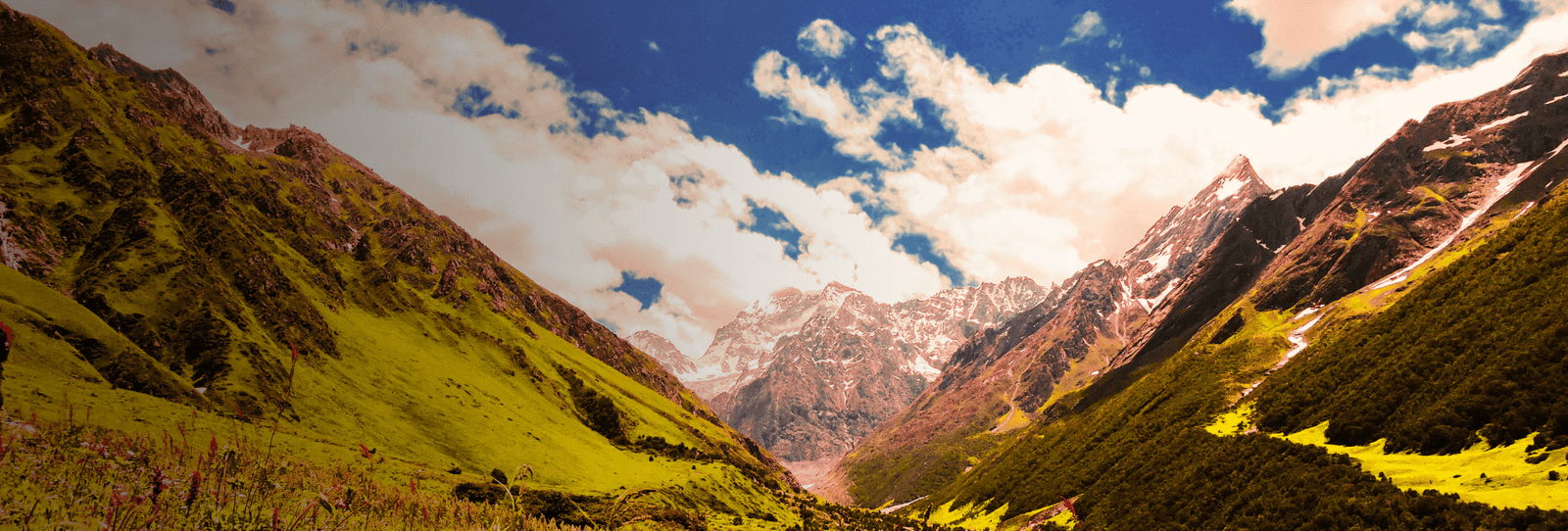
Uttarakhand’s Living Dispensary: Valley of Flowers Trek & Its Ayurvedic Healing Secrets
Uttarakhand’s Valley of Flowers: A Natural Pharmacy in the Himalayas
Way beyond the holiday travelogues and social media clips, the Valley of Flowers in Uttarakhand is much more than a picture-perfect destination. For centuries, this hidden Himalayan meadow has been revered by monks, sages, and Ayurvedic vaidyas as “Dev Vaidya Bhoomi” — the land of divine medicine.
High up at 12,000 to 14,000 feet, this valley transforms every monsoon into a vivid garden of over 600 floral species, many of which are therapeutic, healing, and sacred. It is said that when Lord Hanuman carried the Sanjeevani herb to save Lakshmana, he passed through these very valleys.
The trail isn’t just about trekking — it’s about walking through ancient wisdom wrapped in petals.
Deep Dive into the Healing Flowers of the Valley
Let’s go deeper into a some strong flowers that Ayurveda reveres:
1. Brahma Kamal (Saussurea obvallata)
Where it grows: High ridges near Hemkund Sahib
Ayurvedic Uses:
- A natural antiseptic for cuts and wounds
- Used for treating high-altitude sickness
- Also supports respiratory health
- This limited-edition, which blooms after sunset, is believed to carry divine energy. In ancient texts, it is used in Panchkarma therapies and ritualistic healing.
2. Dactylorhiza hatagirea (Salampanja)
Nickname: “Ayurvedic Sanjeevani”
Benefits:
- Regenerates immunity and vitality
- Helps with male infertility and overall weakness
- Improves lung and digestive system
- Frequently seen growing in the valley’s shaded meadows, this orchid-like herb is now threatened— a symbol of both healing and caution.
3. Angelica glauca (Chora)
Used For:
- Treating digestive problems
- Working as a natural appetite stimulant
- Used in aromatherapy oils to soothe the nervous system
- A rare and aromatic herb, Angelica is still used in traditional Ayurvedic decoctions to balance Vata dosha.
4. Blue Poppy (Meconopsis)
Beautiful and mysterious, this flower is known for:
- Soothing nerve pain
- Working as a natural tranquilizer
- Helping relieve stress and mental balance
Seen as a protector of spiritual wanderers, the blue poppy often hides in rock crevices and misty corners of the trail.
5. Arisaema (Cobra Lily)
- Symbol of Transformation in Himalayan healing
- Used in homeopathy and folk medicine
- Helps reduce inflammation and supports joint mobility
This striking, cobra-hood-shaped plant is believed to embody shakti (feminine energy) and is used in ritualistic Ayurvedic healing.
The Ayurvedic Soul of the Trekking Trail
As you trek from Govindghat to Ghangaria, and onwards into the valley, you’re unknowingly walking through a heritage corridor of Himalayan medicine. The fragrant winds carry the essence of herbs, while the ground under your boots holds stories of healing whispered by the ancients.
Many local Bhotiya tribes and shepherds still rely on these flowers to treat ailments the natural way. They brew roots, crush petals, and inhale leaf infusions passed down from generations.
Even modern Ayurvedic researchers from Rishikesh, Almora, and Dehradun come here to study high-altitude plants for use in natural medicine formulations.
Trekking for Healing, Not Just Adventure
If you’re someone seeking well-being through movement, the Valley of Flowers Trek offers a rare opportunity to heal from inside out.
-
The altitude detoxes your lungs
-
The silence resets your mental noise
-
The fragrance of medicinal herbs calms your nervous system
-
And the flowers nourish your spirit, gently, powerfully
Whether you suffer from stress, insomnia, chronic fatigue, or just emotional burnout — a week in this valley feels like Ayurvedic therapy, served raw by the Earth.
Planning Your Valley of Flowers Trek in 2025?
Best Time to Visit:
- July to mid-August — when the valley is bursting with flowers and herbs.
Trek Duration:
- 5–6 Days from Rishikesh or Haridwar
Trek Partner Suggestion:
- Travel with responsible, eco-conscious guides like Himalayan Hikers who understand the valley’s Ayurvedic significance and help you trek sustainably, safely, and soulfully.
Final Words: Let Nature Heal You
In a world full of artificial pills and quick fixes, the Valley of Flowers offers something sacred — a chance to walk with medicine, not just towards it.
Let your 2025 not be just a trek. Let it be a pilgrimage to Earth’s original healing garden, where flowers don’t just grow — they whisper cures into the wind.

